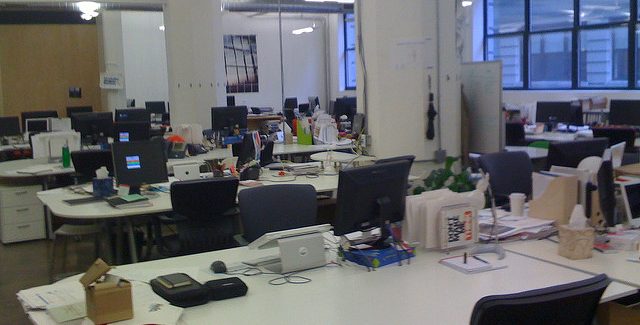Plenty of companies fall into the trap of leaving key job openings vacant for lengthy periods. They tell themselves that the right person just hasn’t come along yet, that the rest of the staff can cover the tasks temporarily and that their bottom line isn’t really suffering much.
It’s that kind of thinking that leads U.S. businesses to lose several billion dollars annually due to the fallout from these unfilled positions. Because the truth of the matter is that these vacancies damage an organization in numerous ways.
Here are some of the often-overlooked side-effects of leaving your key vacancies open for an extended period.
PROJECT/PRODUCTION CHURN
While this negative fallout might be some of the more obvious hindering from jobs left open, companies are probably not aware of just how badly production can be impacted. When jobs are left unfilled, companies can either put those unmanaged projects on the back burner completely or pull other staffers away from their main tasks to chip in—and neither scenario is ideal. Endeavors that are delayed aren’t always easy to get up and rolling again, and pulling workers from other efforts means the fallout is now going to hit other areas of your organization.
Claim your Free Subscription to HireJar, the AI Hiring Platform to Fill Any Role, Any Duration
LOWERED MORALE
Letting positions go unfilled can not only entail this ‘ripple effect’ of dumping more work onto your current staffers, but also sends some messages to the rest of your team—none of them good. For example: The company is possibly struggling; this is not an appealing organization to work for since no one is coming aboard for these jobs; upper management would rather overwhelm the rest of the company rather than bring in the actual needed personnel to succeed; and so forth.
IMAGE IMPACT
Speaking of sending messages, long-running job openings don’t send the best signals to your potential clients and customers—or possible corporate partners—either. Have you ever walked by a restaurant with a big ‘Chef Wanted’ sign in the window? Bet you didn’t go in! Companies can send out the same red flags by not having a receptionist on hand, or a creative director or other highly visible position that remains unfilled. They often say ‘image is everything,’ and if that’s the case you want to portray the image of a fully-staffed organization—not a patchwork quilt with three holes in it.
LOST OPPORTUNITIES
By not aggressively moving to fill your open positions, you’re possibly missing out on some top talent that could really help your organization thrive. Top professionals, just like top jobs, are in demand—so move slowly and you could be missing out on countless premier candidates for your key vacancies. While someone mike make the argument that there will always be some top individuals available, depending on fluctuations in the job market (and various industries) that isn’t necessarily so.
SOFTENED COMPETITIVE EDGE
When you lose top talent by not moving quickly enough to fill vital vacancies, there’s always a chance you’re losing these in-demand individuals to your closest competitors. But even if you’re not, glaring vacancies in an organization won’t look good if you’re striving to make your company stand out in a competitive field. Do you think a potential client facing a tough decision will lean towards a well-oiled machine with ‘all hands on deck’ or a group that lacks the agility or appeal to remain fully staffed?
At the end of the day there are ample negative effects from long-running job vacancies. This explains why many savvy organizations are becoming more flexible in their hiring practices, and/or working with recruiting platforms and hiring companies, to plug these holes and keep their ships sailing smoothly ahead.

